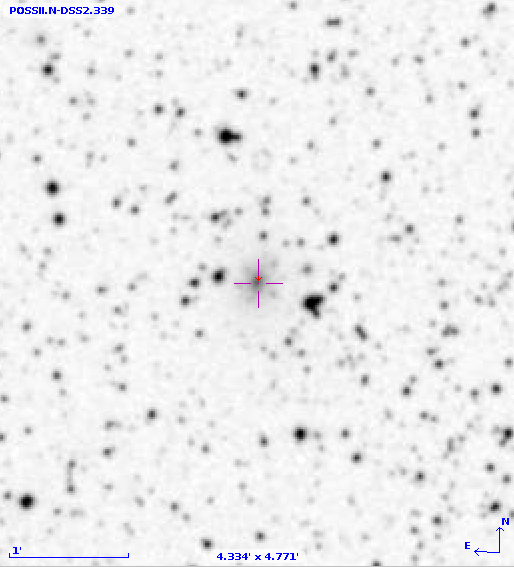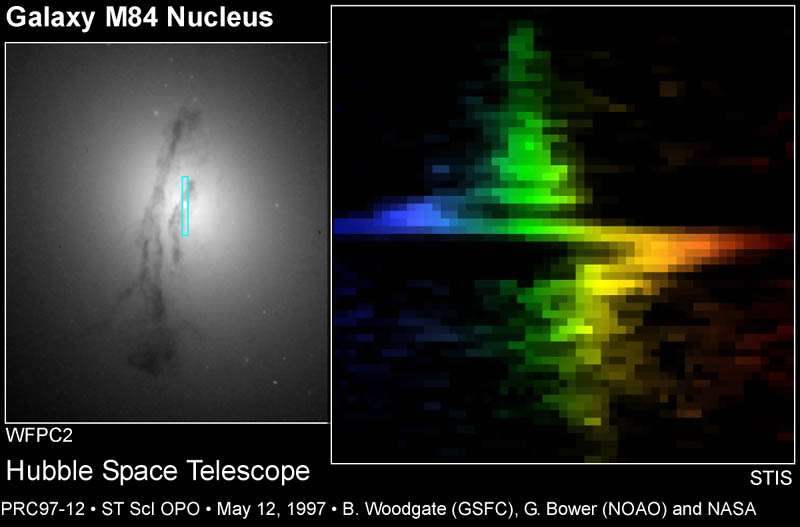
Bower et al., ApJ 492, 111L (1998) measured the motions of gas in the nucleus of M84 and found a clear signature of rotation.
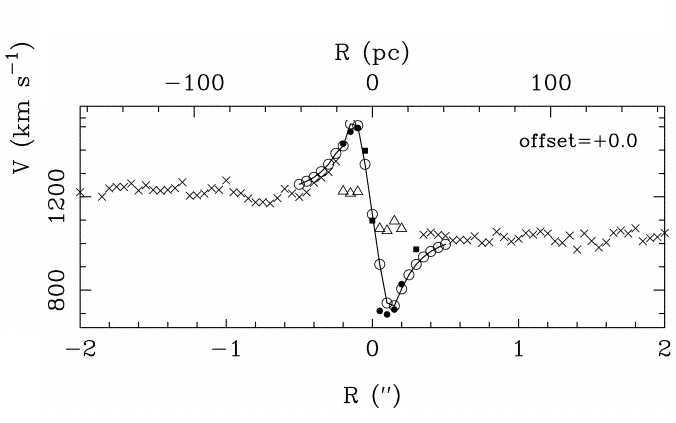
Unfortunately, this takes very high spatial resolution and a galaxy which is relatively close to Earth.
If you can't see honest-to-goodness Keplerian motion, at least you can see evidence for very high velocities.
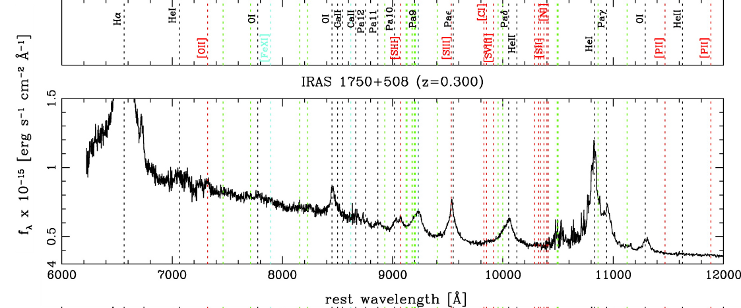
Figure taken from
Landt et al., ApJS 174, 282 (2008)
Q: How fast is the gas in this galaxy moving?
Use the H-alpha line for your measurement.
Most AGN also display narrow emission lines, much less broad than the broad emission lines (not surprisingly). The material producing this light must be farther from the black hole, in order to move more slowly.

Figure taken from
Mazzalay and Rodriguez-Ardila, A&A 463, 445 (2007)
Q: How fast is the gas in this galaxy moving?
Use the H-beta line for your measurement.
The trouble is -- not all narrow emission lines in galaxies are due to AGN, or, more specifically, to phenomena associated with a supermassive black hole. Regions of star formation can also produce emission lines, and some galaxies, the "starburst galaxies", exhibit very large amounts of star formation.
Fortunately, if one can measure the properties of some specific emission lines, one can distinguish between light created by starburst regions from light created near AGN.
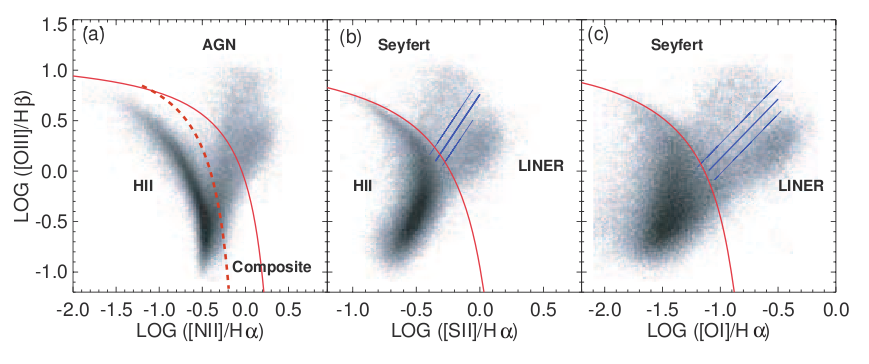
Figure taken from
Groves and Kewley, "Pathways Through an Eclectic Universe",
ASPC 390, 283 (2008)
If you see a linear feature, or pair of features, extending outward from the nucleus of a galaxy, there's little doubt that a big black hole lives nearby. Take a look at M87, for example.
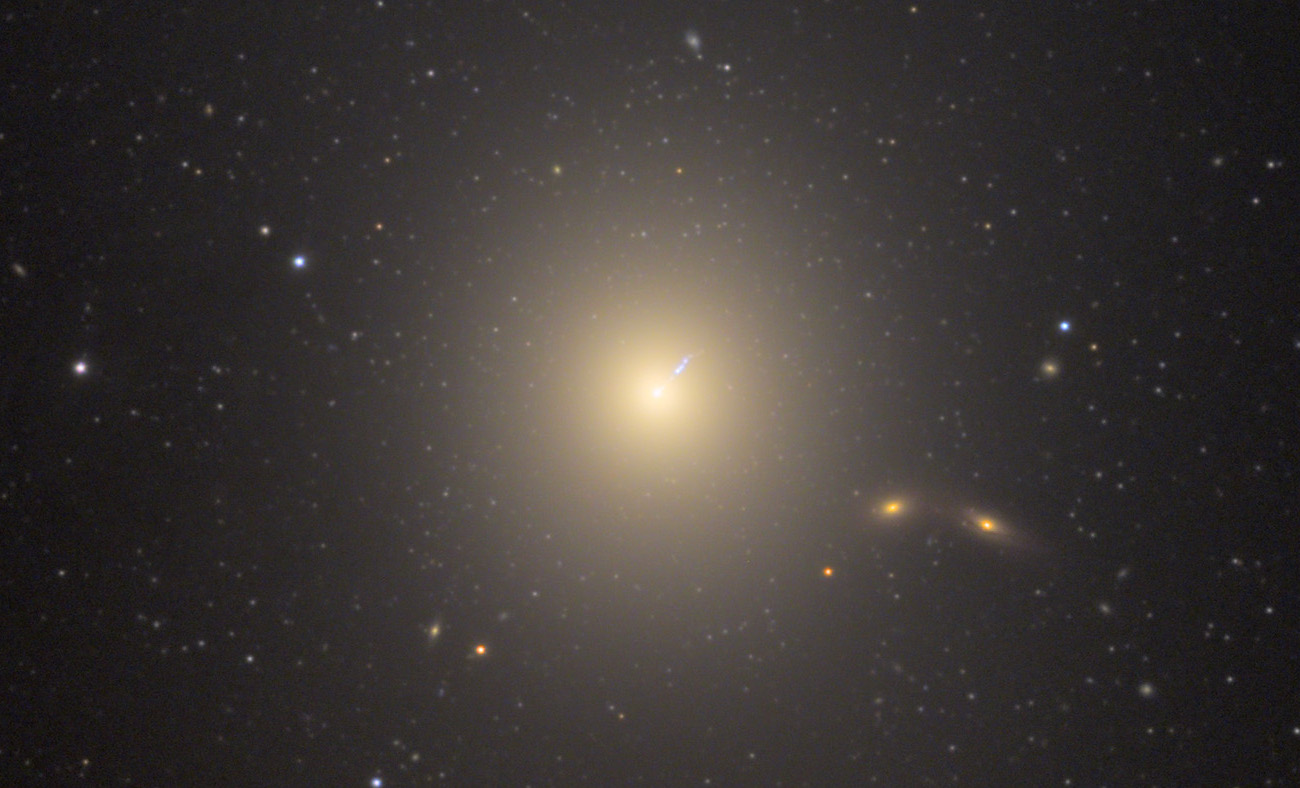
Figure courtesy of
Adam Block ,
Mount Lemmon SkyCenter
and
University of Arizona .
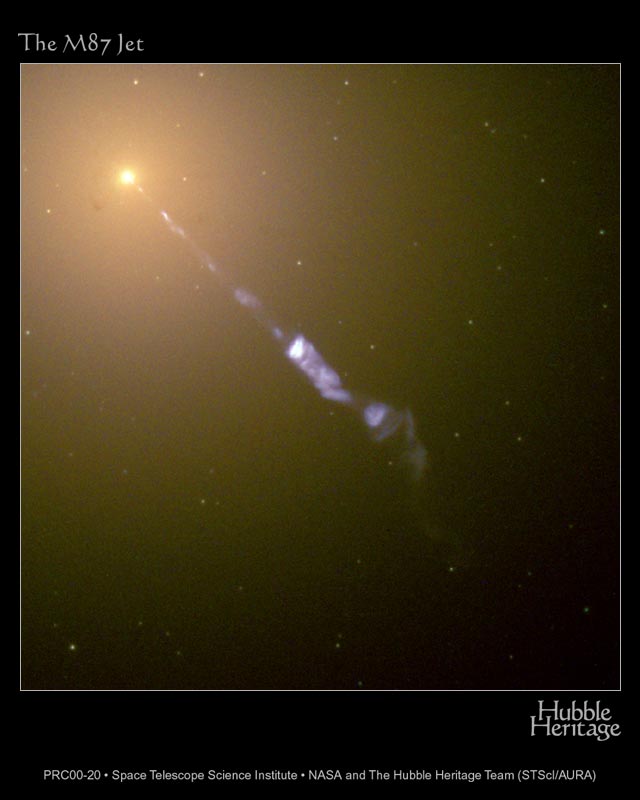
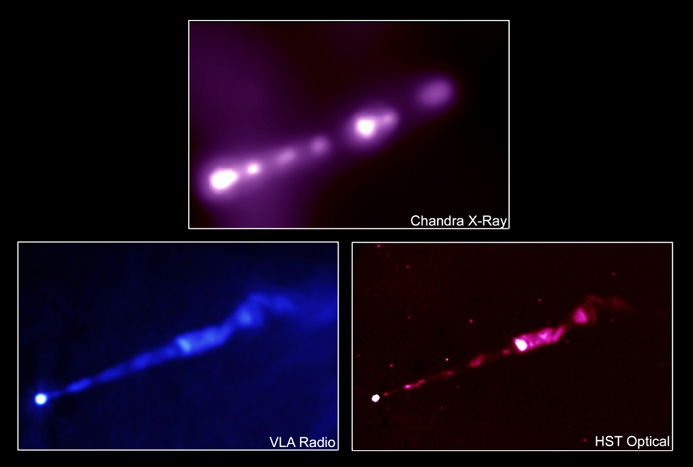
Image courtesy of
H. Marshall (MIT) et al.,
CXC,
NASA,
F. Zhou, F. Owen
( NRAO),
J. Biretta
(( STScI),
E. Perlman
( UMBC) et al.
However, you must be a little careful: there are jets which don't derive from supermassive black holes. Right here in our own Milky Way Galaxy, for example, the variable star SS433 produces a jet of its own, as these radio images show.
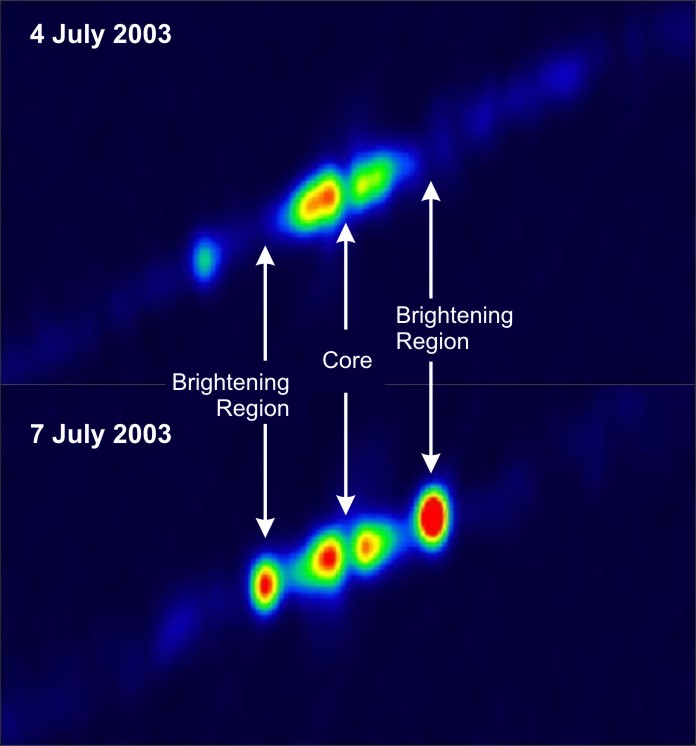
Figure taken from
a very nice exercise written by Irving Robbins
Speaking of jets in AGN, they sometimes exhbit what appears to be superluminal motion -- blobs of gas moving faster than the speed of light. Is that really possible?
So, no, the material in the jets is not moving faster than light ... just very, very close to it.
Some galaxies show pairs of gigantic regions of radio emission far from the center of the galaxy in opposite directions.
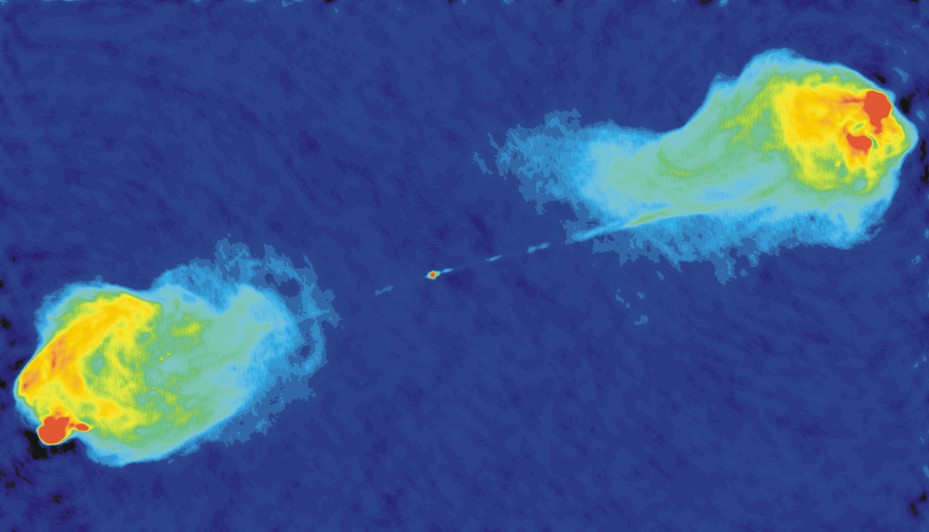
Figure courtesy of
the NRAO Image Gallery
and
NRAO / AUI / NSF
Compare the radio emission to the visible extent of the galaxy:
These so-called "radio lobes" are regions of the intergalactic medium which have been struck by the high-energy particles in the jets.
The spectra of AGN are strange -- even if one ignores the broad and narrow emission lines. Look at the shape of the continuum for an AGN ...
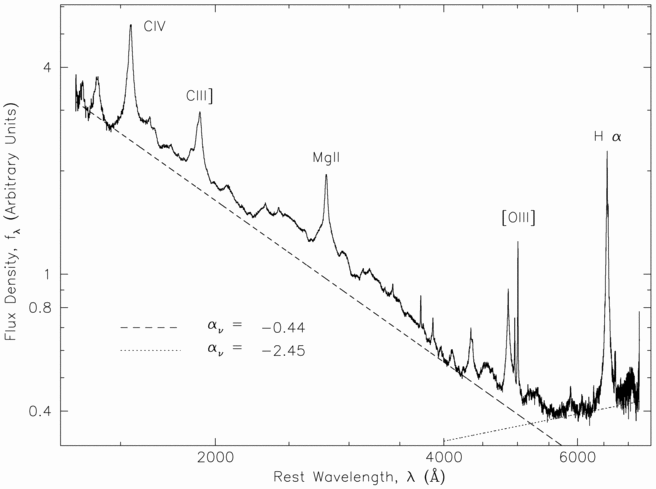
Figure taken from
Richards et al., AJ 122, 549 (2001)
and for an ordinary galaxy:
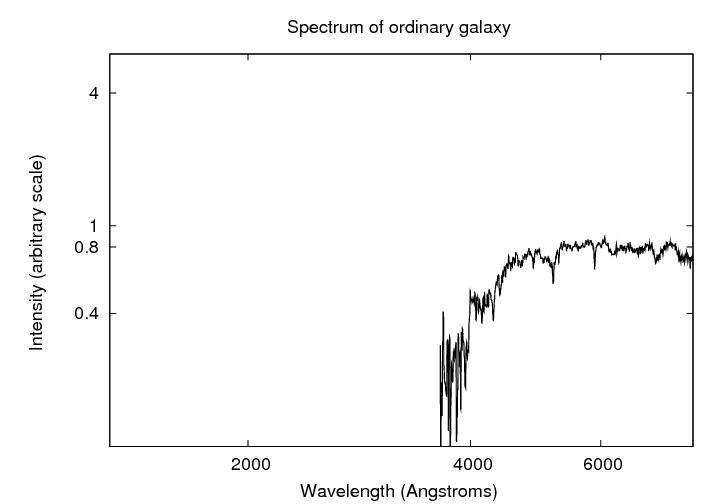
Because AGN emit so much light at short wavelengths, their optical colors stand out from those of ordinary stars and galaxies. This makes them easy to find in a big survey: just look for objects with unusual, blueish colors.
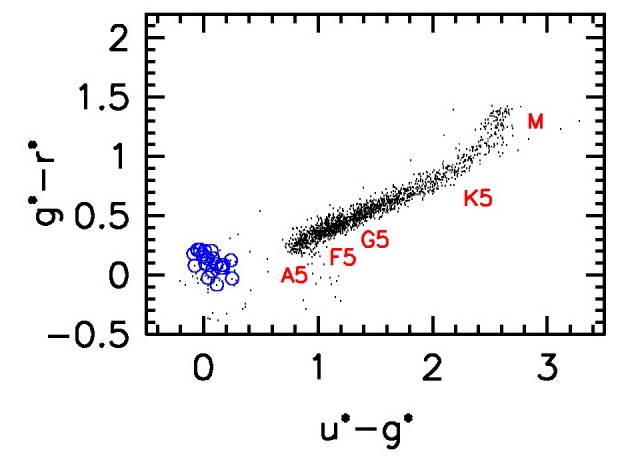
Figure taken from
Finlator et al., AJ 120, 2615 (2000)
Note, however, that at high redshifts, AGN and quasars will move to different regions of any color-color diagram.
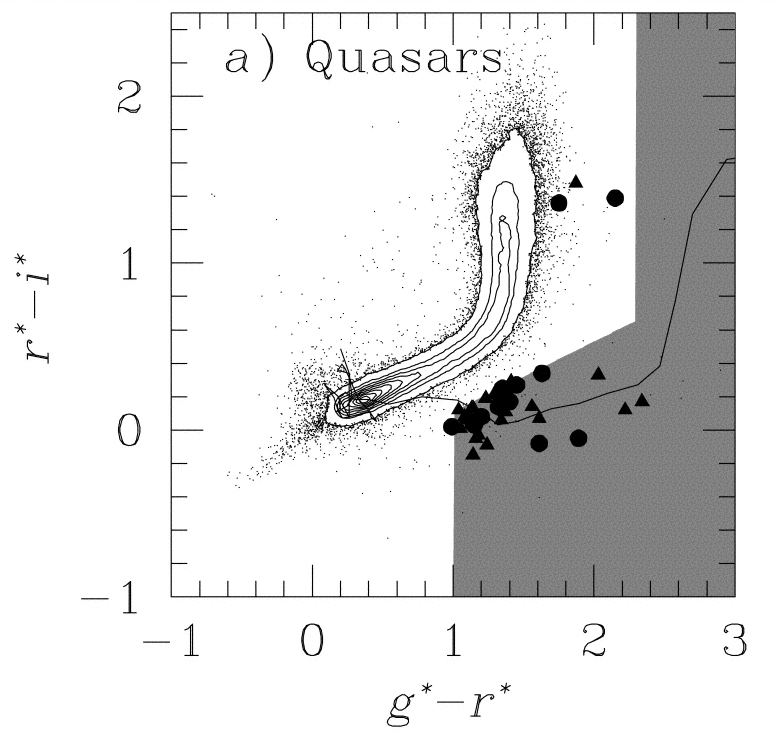
Figure taken from
Fan et al., AJ 121, 31 (2001)
The cause of the "big blue bump" is thermal emission from an accretion disk around the central supermassive black hole. Since the "effective" temperature of this disk is something like a few hundred thousand Kelvin, the peak of the emission lies in the UV.
Q: Schneider, in eqn 5.29, suggests an accretion
disk might have a temperature of order
T = 630,000 K
What is the wavelength at which the spectrum
has a peak?
Express in some appropriate units of length.
Express in keV.
Thermal emission from the accretion disk ought to produce soft X-rays -- those with energy around 1-5 keV. Lots of other types of sources can produce soft X-rays, too, such as very young protostars and the warm ionized medium, so one must be careful in using X-ray emission to identify AGN. Below is the Spectral Energy Distribution (SED) for Markarian 421.
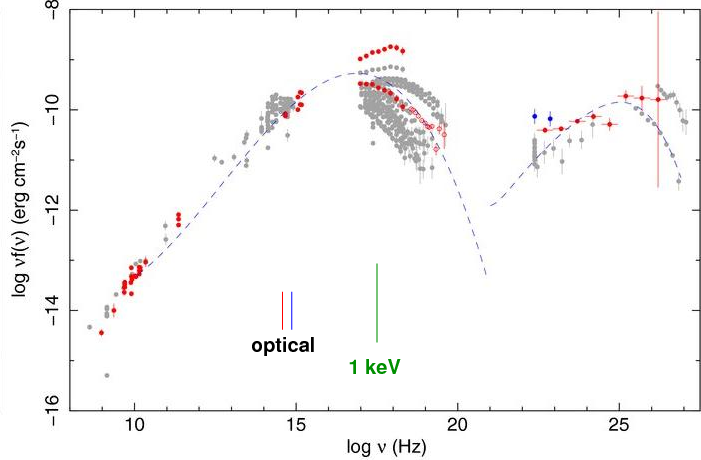
Figure taken from
Abdo et al., ApJ 716, 30 (2010)
The innermost regions of the accretion disk can produce "hard" X-rays, with energy exceeding 5 keV. In a few cases, we can see radiation from iron atoms -- the K-alpha line, emitted when an electron drops from the L shell to the K shell in the atom -- -- which shows the effects of special and general relativity. Here's an illustration of the theory,
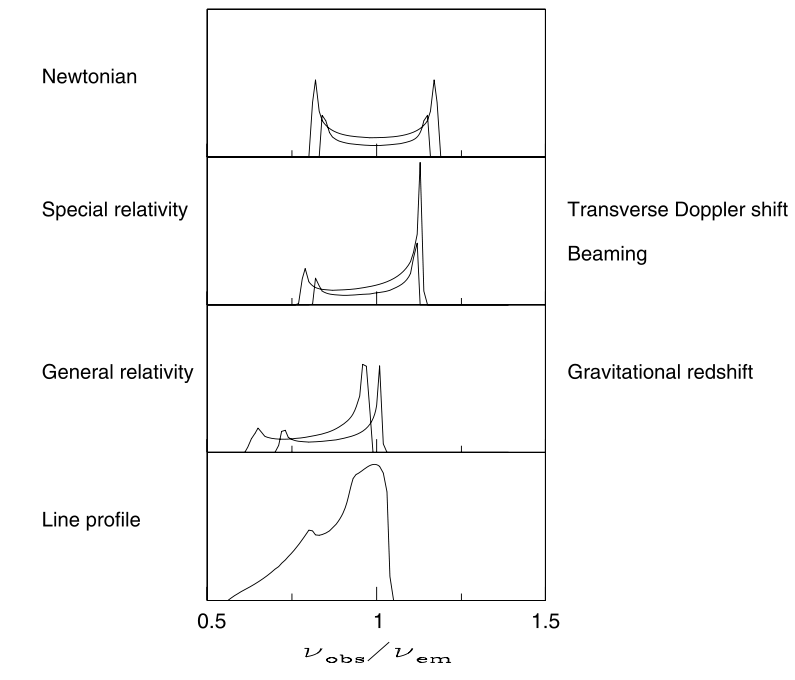
Figure taken from
Guainazzi, Ap&SS 320, 129 (2009)
and here's an example of the data.
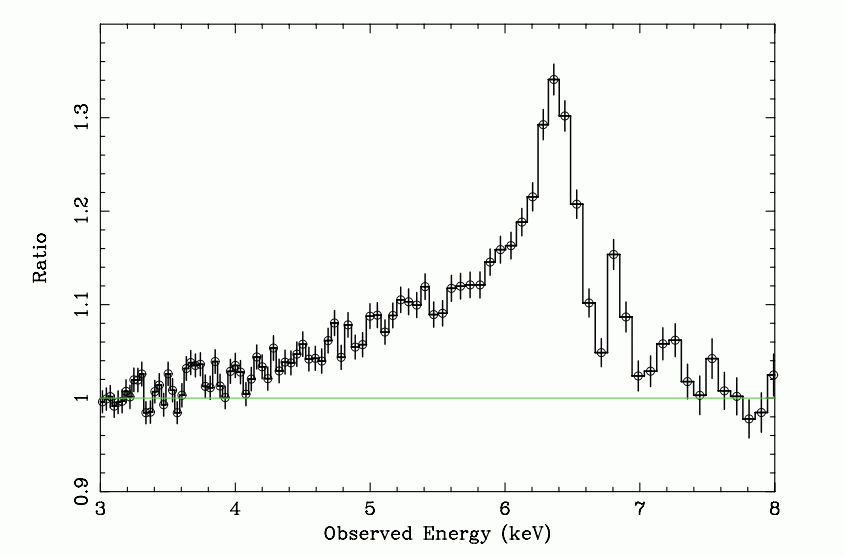
Figure taken from
Guainazzi, Ap&SS 320, 129 (2009)
Let's look at that SED for Mark 421 again. The peak on the right represents photons with extremely high energies: gamma rays. Not all AGN are observed to produce such gamma rays, but some do. What physical process could produce photons with such high energies?

Figure taken from
Abdo et al., ApJ 716, 30 (2010)
The answer is inverse Compton scattering. Recall that AGN have jets full of relativistic particles flying out from their centers.
Some AGN vary in luminosity by large factors over just a few days, or even a few hours. Look at 3C273, for example, in X-rays:
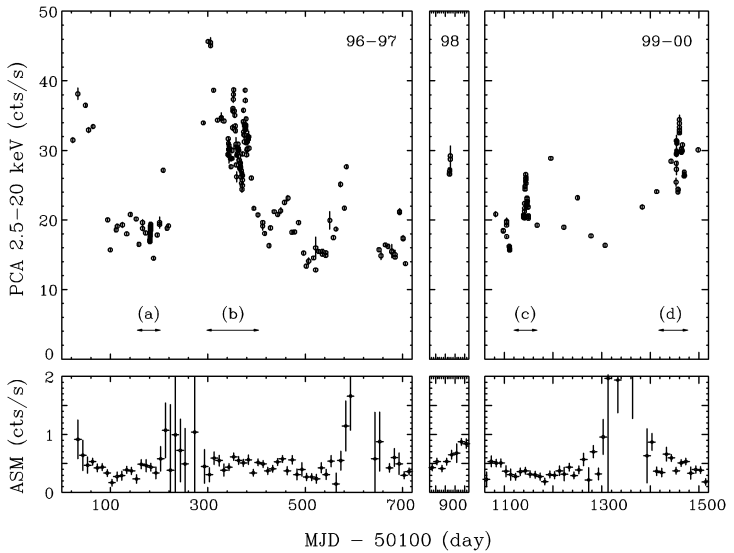
Figure taken from
Kataoka et al., MNRAS 336, 932 (2002)
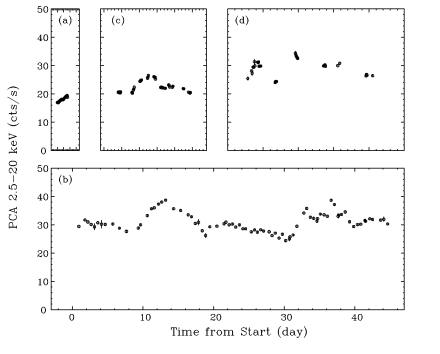
Figure taken from
Kataoka et al., MNRAS 336, 932 (2002)
... and in gamma rays:

Figure taken from
McNaron-Brown et al., ApJ 474, 85L (1997)
... and in the optical:

Figure taken from
Ulrich, Courvoisier and Wamsteker, ApJ 411, 125 (1993)
Some AGN radiate light which is polarized -- a very unusual situation. The study of optical polarization by Smith et al., ApJ 663, 118 (2007) indicates that the polarized light is concentrated in the nucleus, as one would expect ...

Radio interferometry can probe the polarization on scales fine enough to show its spatial structure.
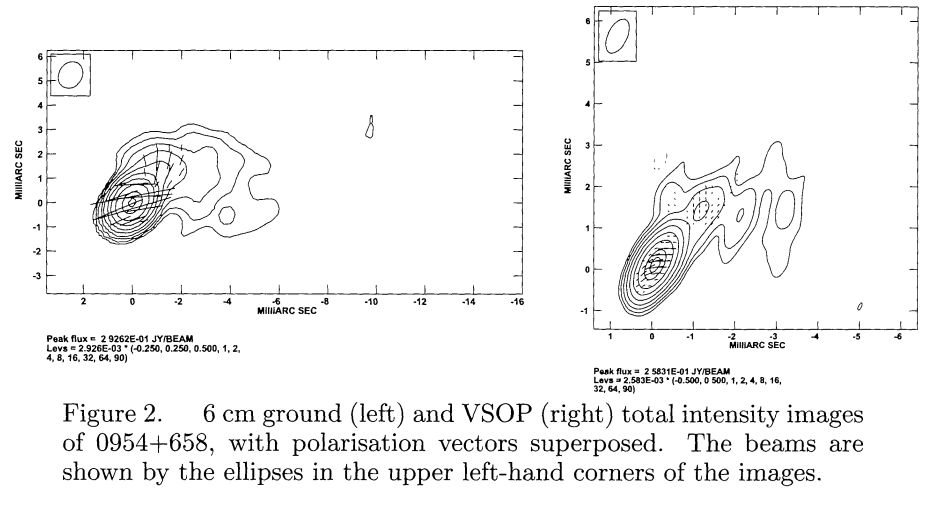
Figure taken from
Gabuzda, in "High Energy Blazar Astronomy", ASPC 299, 99 (2003)
Light from the jets is produced by synchrotron radiation, as energetic electrons spiral around a magnetic field. The magnetic field lines impose an order on the radiation (or at least a portion of it), causing the electric field vectors to be aligned. If we can see the jets directly, we may expect to detect polarized light.
But there's another way that AGN can produce polarized light, in a more indirect manner. Consider the "unified model" of an AGN. (You didn't think you could escape this picture, did you?)
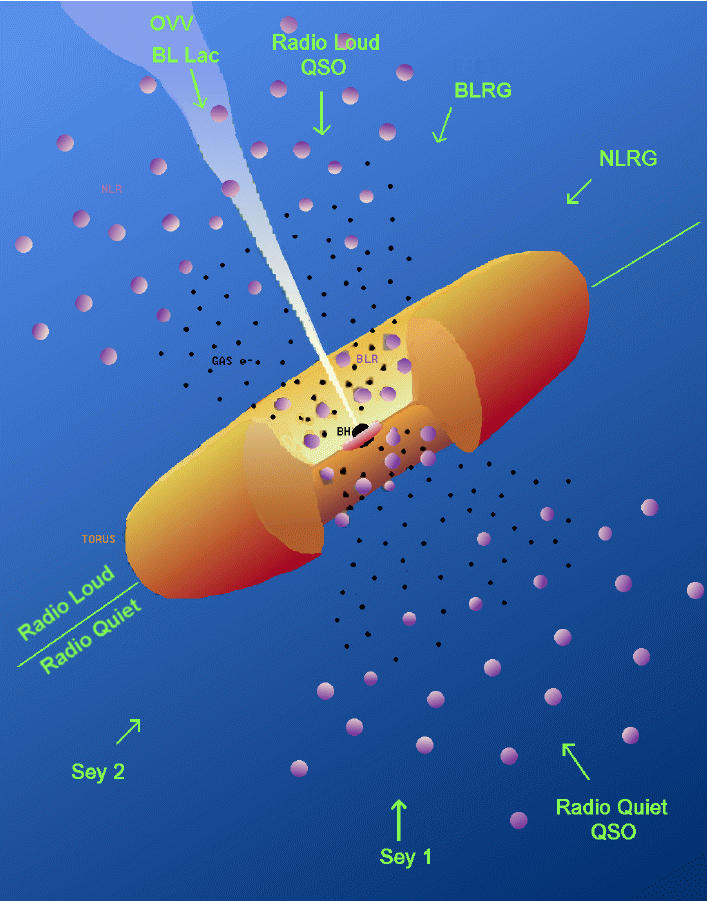
Figure taken from
the Essential Radio Astronomy course at NRAO
and based on the original figure of
Urry and Padovani, PASP 107, 803 (1995)
If the observer views the system from the poles of the torus, he can see the broad-line region and perhaps even the accretion disk itself. If the observer views the system from edge-on, the torus blocks his view of those regions. However, some of the light from the inner regions may fly out along the poles, then scatter off material farther away and bounce toward the observer. In other words, some light from the inner regions may reach the observer, but only after being scattered. The scattering process will polarize the light, so any of this radiation from the "hidden" portions of the system ought to be polarized.
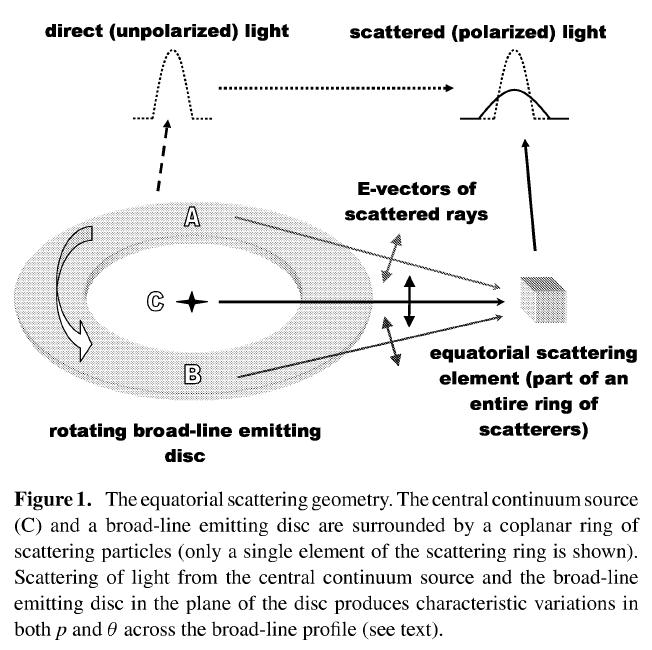
Figure taken from
Smith et al., MNRAS 359, 846 (2005)
And, voila, when we observe some edge-on AGN, we do see polarized light which follows the expected pattern in wavelength and polarization fraction.

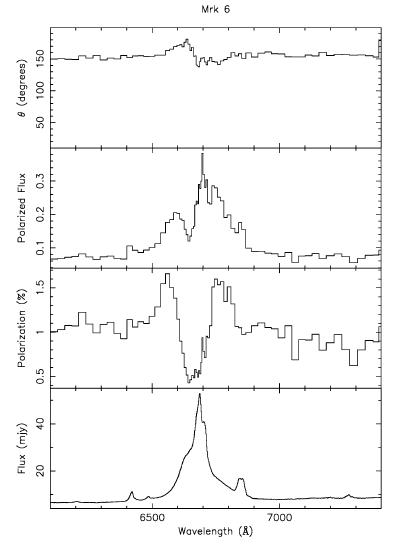
Figures taken from
Smith et al., MNRAS 359, 846 (2005)
 Copyright © Michael Richmond.
This work is licensed under a Creative Commons License.
Copyright © Michael Richmond.
This work is licensed under a Creative Commons License.
